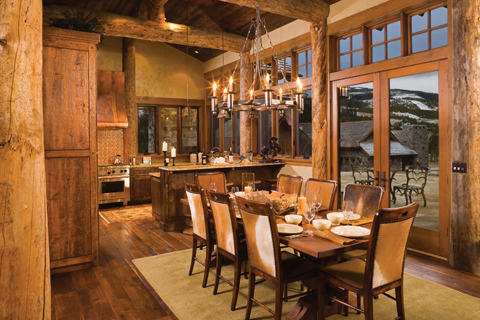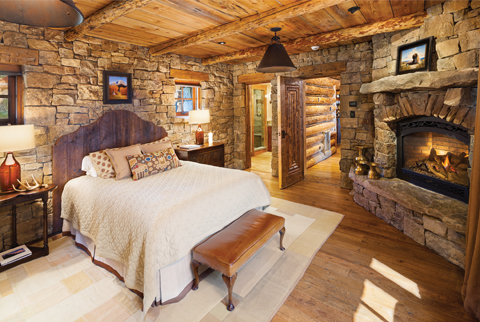Area rugs are the magicians of decorating. They have the ability to completely transform a space, adding style, color, texture, and pattern to complement your home. Your choice of area rugs defines your style and announces it to your guests. If you decide you need a change, they are readily available in the marketplace.
Area rugs come in just about every decorating style, from Arts & Crafts to Western/Native American to contemporary. You can go a more traditional route with a classic Persian, Oriental, or Navajo style or add to your Arts & Crafts decor with a reproduction Morris pattern. An area rug with a specific decorating style can be a focal point and serve as a starting point for color choices in other parts of the room. If your space already has a defined color scheme, an area rug that echoes that scheme can tie a room and its contents together.
If the walls or floors of your space already have a predominant pattern or your collection of artwork is the desired focal point, a simple, neutral rug would be an ideal choice. On the other hand, a colorful, patterned rug can turn up the volume in a neutral space.

Photo by Karl Neumann
Area rugs also serve many functional purposes. An area rug will dampen the noise in a large room with voluminous ceilings. Sounds—conversations, TVs, music—tend to bounce off uncovered windows and floors. A dark space can be brightened with a light neutral rug and a cold space can be warmed up with warm or vibrant colors. Using a light-colored carpet in a small space can make it appear larger, while a very large space can be made cozier with any type of area rug. A striped or chevron-patterned rug can also visually enlarge a space.
Interior designers have developed a sizing formula for each area of a home. In addition, there are some common sense design guidelines for selecting an area rug for a particular room. These are good starting points for choosing a rug, but let your space and your taste dictate your purchases.
Foyer or Hallway: The foyer sets the mood for visitors to your home and welcomes them in. A foyer carpet should complement your décor and other area rugs in the home and indicate your chosen style. A hallway rug can separate the public spaces from the private and beckons people to areas beyond the rug. In both areas, the rug should be sized to show some of your flooring on all sides. For a large, square or rectangular foyer, you’ll want to see about 24 inches of flooring all around. For a hallway, the area rug must be wide enough to walk on with both feet to prevent tripping. Ideally, select a durable, patterned rug in a darker shade for these high-traffic areas.

Photo by Heidi Long
Great Room or Living Room: Most interior designers recommend leaving a minimum of three or four feet of flooring showing all around the area rug. If you have nice hardwood or tile floors you won’t want to hide them completely. Also, leaving space around the rug makes the room appear more spacious. In a large great room that serves multiple purposes, area rugs can be used to visually divide the space. A large seating area in front of the fireplace can be placed on one rug while a more intimate spot with one or two chairs is created with another. If you are using more than one rug in a space, look for styles and colors that complement each other. Also vary the sizes. Using two or more identical rugs chops up the room and creates a static look. When placing furniture, most decorators say it is acceptable to have the two front legs on the carpet with the back two on the floor. If the rug is large enough it is all right for all four legs of each piece to rest on the carpet. It is best to avoid leaving more than two feet of empty rug behind the furniture.
Dining Room: Experts say you can determine the best size for a dining room area rug by adding a minimum of 24 inches and up to 30 inches to the dimensions of the table. This allows the chairs to remain on the rug when people pull out the chair to sit down or stand up. The chair legs won’t get tangled up in the edges of the rug, preventing damage to the rug and floor. Choosing a rug with a low pile will make moving the chairs easier. Also consider using an easy to clean, darker toned, or patterned rug in case of any spills. Unless your dining table is glass, avoid an area rug with a centered medallion; the pattern will be lost under the table.

Photo by Karl Neumann
Bedrooms: Old-school design rules dictated that the bed should be completely on or completely off an area rug. Today we see a few other options. If you are using a single rug under the bed, it should be centered with an equal amount of rug showing on two or three sides. When getting out of bed you’ll want to place both feet on the rug. Alternatively, place smaller area rugs on both sides and at the bottom of the bed. Bedroom rugs should be comfortable to walk on and complementary to other colors and features in the room. If you have wall-to-wall carpet, you can still use area rugs, but try to find one with a lower pile to prevent tripping.
The most important thing about selecting an area rug is that you love it. It should serve its intended purpose and enhance your style. With so many options available today in all styles, price ranges, and materials, you’ll surely find one that meets your expectations.

